I am a firm believer in learning about things and places which are unfamiliar. When we explore new things, we learn about others - and ourselves. One such book I've read recently is truly an exploration of a culture entirely different from my own.
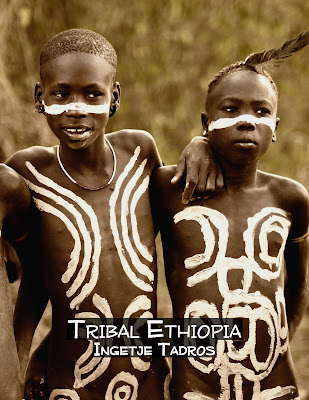
Tribal Ethiopia is a collection of extraordinary photos, taken by Ingetje Tadros in the Omo Valley. These tribes, endangered by prospects of a new dam, epitomize life long ago. From the creativity in clothing to the stunning landscapes, Tadros has captured rural Ethiopian tribal life extremely well. The closeups of eyes, jewelry, feet, camaraderie, tools, all inspire. I can't stop looking at the photos in this book - and wanted to know more.
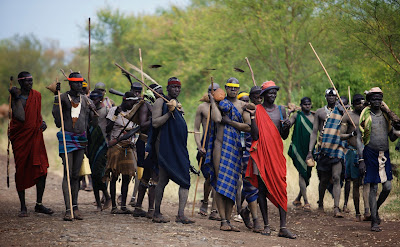
Bodi Tribe Salamago
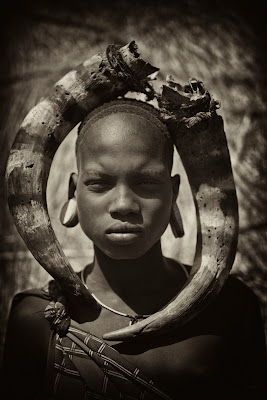
Mursi tribe
WE: Please tell us about your new book, Tribal Ethiopia…
IT: Tribal Ethiopia was born spontaneously, after this trip I felt compelled to make a book. I took so many images of these amazing people and wanted to share this with the rest of the world.
I've travelled a lot, and taken many images over the years, (i started to take photos from age 17 so I have piles and piles of photo books), but nothing really happened with these images, other than a sale here and there or some donations. But as I started 2 years ago to take my photo work seriously, I took this trip also seriously - and so I took this book seriously as well.
This book is mainly portraits - and to me it's a way of showing my passion for these tribes and my photography. Also as modernisation is in full speed, I wanted to document these people and cultures.
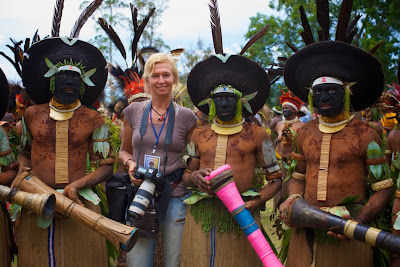
author Ingetje Tadros (above in Papua New Guinea and below in the Omo Valley)

WE: What inspired you to journey to Ethiopia and photograph this book?
IT: My inspiration for this book was Hans Silvester. I truly admire his work, and as I love to travel to remote places, I thought this was the place to go.
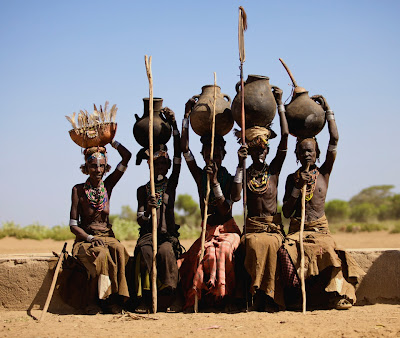
Bumi Tribe Omo River
WE: What is your photography background?
IT: I am self-taught , which is painful sometimes as there is so much to learn, sometimes I feel like a snail, as I am a bit of an impatient person haha. I've always photographed but only since 2 years ago take my work very seriously, so I say to myself, 'no pain, no gain'. But this is what I just LOVE so I will persevere!

Bumi Tribe Omo River
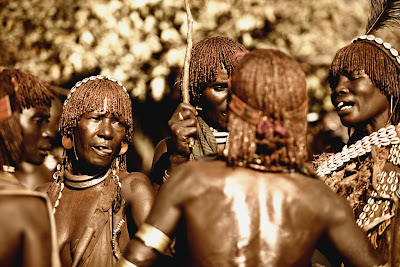
Hamar Tribe bulljumping
WE: Did you need to get special permission or access to these tribes?
IT: I hired online a driver and a guide and made an itinerary with them, unfortunately when I went to the meeting point the guide never showed up and the driver did not know where we were going. Now I laugh about it, but at that moment it was very stressful - I only had 4 weeks in country for this project. And yes in some areas a permit was needed, to be purchased locally.

Hamar tribe bulljumping
WE: What did you learn about the tribes in Ethiopia? I would have loved to have read more, in this book!
IT: I decided to make a book with only photos and some explanations in the end of the book. To me, it is about the photos, not the text.
What I learned about the tribes is that they are genuine lovely people, but you need to take the time to spend with them. If not, and you are passing through, you are just another tourist. Unfortunately in some places, unavoidably there are groups and groups of tourists - and then the whole setting just changes and it's all about money and people become agitated. But overall the people were really lovely.

Hamar tribe
WE: Were you welcomed, as a photographer and visitor?
IT: In The Omo Valley it was not always that easy and people were quite money oriented. They were welcoming for a while. However, when I stayed around and waited till everything settled, I had a great time. For example, one day it was pouring rain and the local market day was not going ahead, so all the tribal people disappeared in a local drinking house. I decided to go there as well. I must've spent all afternoon and night there with my husband - and had an amazing time. There were no other tourists and to take photos was not a problem at all, they even asked me! It's all about spending time together and getting to know each other a little. This was the best day I had in the Omo valley!
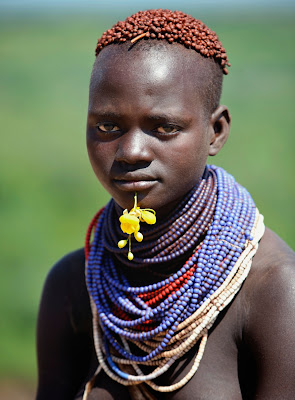
Bodi tribe
WE: Do you feel that these tribal ways of life are sustainable, in this modern age?
IT: There are so much troubles and I hereby include the latest report of Survival: (survivalinternational.org/tribes/omovalley)
SURVIVAL INTERNATIONAL PRESS RELEASE
October 13, 2011, UN demands urgent answers from Ethiopia over Gibe III dam
The Kwegu are one of the tribes threatened by the Gibe III dam in Ethiopia's Omo valley. © Survival The UN’s growing concern over Ethiopia’s construction of the controversial Gibe III dam has prompted it to demand urgent information from the African state.
The Committee on the Elimination of Racial Discrimination (CERD) has given Ethiopia until the end of January 2012 to provide reliable evidence that independent assessments have been carried out, and that tribal people in the region have been properly consulted.
The UN body has written to Ethiopia with its concerns under its ‘early warning and urgent action procedure’. It has appealed for ‘constructive dialogue’ but noted how previous requests from the UN’s Special Rapporteur on indigenous rights had been ignored.
During the dry part of the year, when the water table drops, the Nyangatom, Mursi and other tribes of the area dig deep holes in river beds to water their cattle and to get drinking water. © Serge Tornay/Survival The UN’s World Heritage Committee has also written to Ethiopia calling for it to ‘immediately halt all construction’ and for ‘all financial institutions supporting the Gibe III dam to put on hold their financial support.’ Both the Omo Valley, and Kenya’s Lake Turkana, which is fed by the Omo river, have been recognized by UNESCO as World Heritage Sites.
Survival International has been calling on the UN to take action over Ethiopia’s construction of the Gibe III dam, and its decision to lease out large areas of tribal land for commercial plantations in the South Omo region. The dam will regulate the flow of the Omo and enable irrigation of the plantations.
Survival recently revealed that around one hundred indigenous people have been arrested and jailed for opposing the dam and plantations.

WE: Is there anything else you'd like to share with us?
IT: I like to share my concern about the Dam they are building, I am so worried what will happen to all these amazing tribes. It's another world out there and my heart goes out to the people in The Omo Valley. If you will ask me if I will go back, my answer is yes. I would love to go for a much longer time and stay with one of these tribes and tell their story.

Mursi tribe, Ethiopia
WE: Thanks so very much, Ingetje. You've shared a glimpse into an extraordinary world.
For more information, and to order the book, please see:
http://www.ingetjetadros.com/
A portion of the sales of the book will be donated to Survival International, the Movement for Tribal Peoples
All images ©Ingetje Tadros
Note: We received a review copy of Tribal Ethiopia from the author. Thank you!
